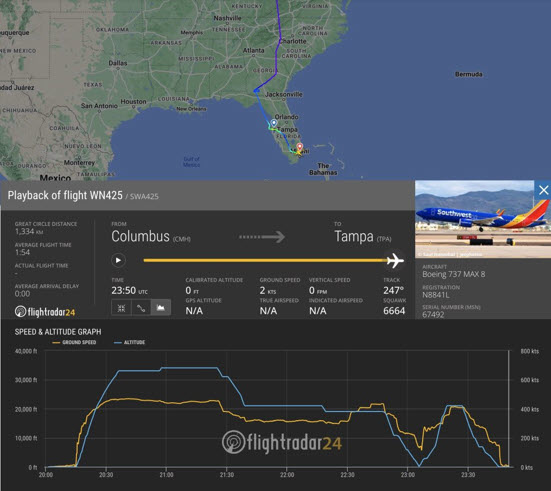A more complete story should open readers’ eyes

There are good reasons why the NTSB prohibits parties involved in an investigation from publicly commenting on the investigation. This rule is in 49 CFR 831.11, which states that parties to an investigation are not allowed to release information about the investigation or comment on it publicly. This ban has long been in place to minimize the risk that inaccurate or slanted information does not influence the Board’s deliberative processes.
The press, unconsciously or unintentionally or purposely to attract more readers/clicks, headlines names on which the public appears to be focused. Though this practice is not likely driven by malice, drawing attention to these high profile names tends to create the perception that the headliners are at fault.
An example of guilt-by-headline is this string of articles, written by the acknowledged dean of aviation writers:
- US FAA probes latest SOUTHWEST AIRLINES flight that posed safety issues
- US FAA probes low-flying SOUTHWEST AIRLINES flight near Oklahoma City
- US NTSB investigating ‘Dutch roll’ by SOUTHWEST BOEING 737 MAX
The facts of these and other articles accurately recite the brand names and their involvement. To the average reader they surmise that the list equals suspicion.
The below article published by FlightRadar24 covers all of the elements which were involved. An aircraft on final approach reached 150 ft AMSL; well before that point two warnings should have intervened.

Without pointing a finger, first, the author mentioned the pilots. As with many aviation safety systems, these humans are supported by redundant mechanisms. The pilots fly with the benefit of an Enhanced Ground Proximity Warning System (EGPWS). It reduces the risk of controlled flight into terrain BY PROVIDING FLIGHT CREWS WITH TIMELY, ACCURATE INFORMATION ABOUT TERRAIN AND OBSTACLES IN THE AREA. The system uses various aircraft inputs and an internal database to predict and warn flight crews of potential conflicts with obstacles or terrain.
It is possible that this unit was defective (SW MX?) or that the EGPWS had been disarmed by someone.
That equipment should have warned the cockpit of its low altitude, well before the air traffic controllers did.
The controllers have radars screens that track the aircraft arriving at TPA and that information displays the altitude of the plane. Again, the height of the B-737 was well below the prescribed track. The warning equipment may have been defective or there may have been human error.
These additional details SUGGEST A BROADER RANGE OF POSSIBLE CAUSES—the manufacturer of the EGPWS, the individuals who installed the EGPWS, the individuals who maintained it; the training of the pilots, their readiness for flight; the government contractors who designed and manufactured the FAA radars and associated software, the persons who maintained them; and other possible scenarios. Yes, by listing these alternate options, the spirit of 49 CFR 831.11 is not fully met, but they may add to a fairer view of the headlined names. \Ian Pechenik’s more though, detailed article opens the readers’ perspective to a broader range.
XXXXXXXXXXXXXXXXX
FAA Investigating Southwest low approach in Tampa

- Updated: July 22, 2024

The FAA says it is investigating an incident involving a Southwest Airlines (SWA | WN) flight that descended too low during its approach to Tampa on 14 July. Southwest flight WN425 was on approach to Tampa International Airport when it flew as LOW AS 150 FEET 4.8 miles from the runway threshold, according to ADS-B data. An air traffic controller alerted the Southwest crew, noting their altitude was too low. The pilots conducted a go-around and ended up diverting to Fort Lauderdale.

How low did they go?
Granular ADS-B data recorded by Flightradar24 receivers (available for download below) in the area show a minimum barometric altitude of 150 ft AMSL at the aircraft’s lowest point. The aircraft descended to its lowest altitude just before passing over Courtney Campbell Sunset Point on the north side of the Campbell Causeway. For reference, the three preceding arrivals into Tampa’s Runway 10 flew over the same point at 1,225 ft AMSL.

Aircraft information

Flight 425 was operated by a Boeing 737-8 MAX delivered to Southwest on 8 February 2023. The aircraft is powered by two CFM LEAP1-B engines.
xxxxxxxxxxxxxxxxxxxxxxxxx